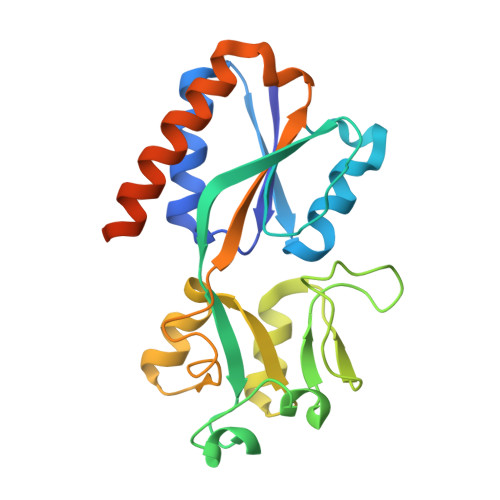Flexible Fragment Growing Boosts Potency of Quorum-Sensing Inhibitors against Pseudomonas aeruginosa Virulence.
Zender, M., Witzgall, F., Kiefer, A., Kirsch, B., Maurer, C.K., Kany, A.M., Xu, N., Schmelz, S., Borger, C., Blankenfeldt, W., Empting, M.(2020) ChemMedChem 15: 188-194
- PubMed: 31709767
- DOI: https://doi.org/10.1002/cmdc.201900621
- Primary Citation of Related Structures:
6Q7U, 6Q7V, 6Q7W - PubMed Abstract:
Hit-to-lead optimization is a critical phase in drug discovery. Herein, we report on the fragment-based discovery and optimization of 2-aminopyridine derivatives as a novel lead-like structure for the treatment of the dangerous opportunistic pathogen Pseudomonas aeruginosa. We pursue an innovative treatment strategy by interfering with the Pseudomonas quinolone signal (PQS) quorum sensing (QS) system leading to an abolishment of bacterial pathogenicity. Our compounds act on the PQS receptor (PqsR), a key transcription factor controlling the expression of various pathogenicity determinants. In this target-driven approach, we made use of biophysical screening via surface plasmon resonance (SPR) followed by isothermal titration calorimetry (ITC)-enabled enthalpic efficiency (EE) evaluation. Hit optimization then involved growth vector identification and exploitation. Astonishingly, the latter was successfully achieved by introducing flexible linkers rather than rigid motifs leading to a boost in activity on the target receptor and anti-virulence potency.
Organizational Affiliation:
Drug Design and Optimization (DDOP), Helmholtz-Institute for Pharmaceutical Research Saarland (HIPS)-Helmholtz Centre for Infection Research (HZI), Campus E8.1, 66123, Saarbrücken, Germany.















